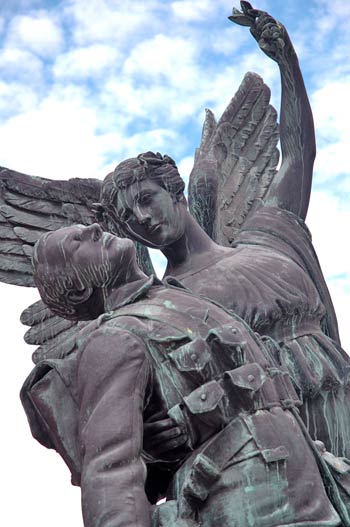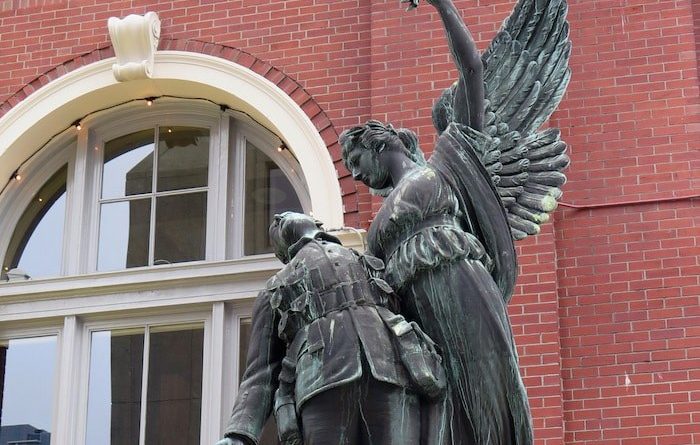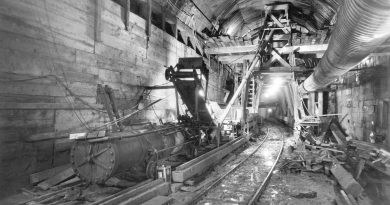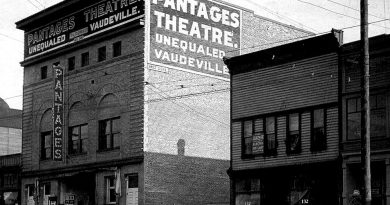Winged Victory
This famous bronze memorial was erected here in 1921 to commemorate Canadian Pacific Railway employees who had lost their lives in the First World War. There were, astonishingly, 1,100 of them. Copies of the memorial, perhaps named Winged Victory, went up in Winnipeg in 1922 and at Montréal’s Windsor Station in 1923. After the Second World War, a plaque was added to the statues as a tribute to soldiers in that war.

Photo: Jim McGraw
The sculptor, commissioned by the railway after a nation-wide hunt, was the grandly named Coeur de Lion MacCarthy. London-born in 1881, he was the son of an artist with an equally splendid name, Hamilton Plantagenet MacCarthy. He trained in his father’s London studio, later moved to Montréal in about 1918 to establish his own studio. McCarthy created numerous war memorials including monuments in Trois Rivieres and Knowlton, as well as the Verdun War Memorial. He has a lot of other work around Canada, including busts of Sir Wilfrid Laurier and of Sir John A. Macdonald, small lions guarding the entrance to the Parliament Buildings and a bust of Queen Victoria for the alcove above the Speaker’s chair in the Senate Chamber.
Winged Victory is a big piece of work. Exclusive of the base it stands seven feet high and weighs 3,000 pounds. The three copies of the work came from the foundry of the Henry Bonnard Company of Mount Vernon, NY.
In 1967 some locals were dismayed by what they called a “dirty” statue and used wire brushes and detergent to scrub the “dirt” off. It was, in fact, the usual patina of a bronze statue exposed to the elements. “Exposure to air,” says a web site on the subject, “gradually changes the bronze to green; sea air and pollution hasten the process. Rain, saturated with chemicals, shows up as streaks on the bronze. Such a patina is either valued or, if not appreciated, can be prevented from the beginning by regularly washing and waxing the statue.”
Scratch marks from the cleaning can still be seen on the statue.
My thanks to friend and writer Jim McGraw for aiming me at sources of information about MacCarthy, and for noticing that the sculptor’s signature is on the work. The next time you go by, look for it.
MacCarthy died January 22, 1979 in Montréal at the age of 97.
The tablet on the sculpture reads: To commemorate those in the service of the Canadian Pacific Railway Company whom at the call of King and Country left all that was dear to them, endured hardship, faced danger and finally passed out of sight of men by the path of duty and self sacrifice, giving up their own lives that others may live in freedom. Let those who come after see to it that their names are not forgotten.
1914-1918
1939-1945




